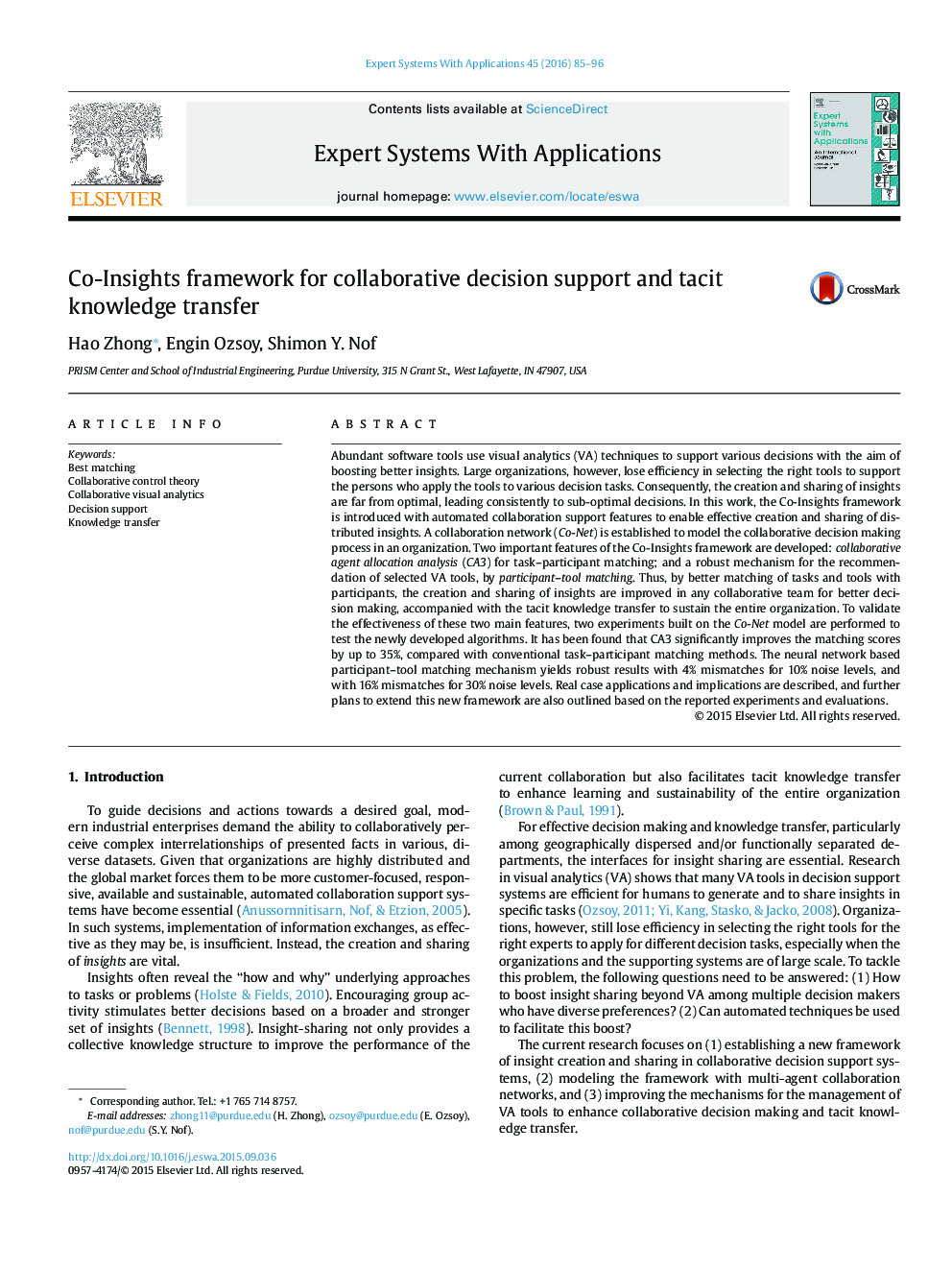| کد مقاله | کد نشریه | سال انتشار | مقاله انگلیسی | نسخه تمام متن |
|---|---|---|---|---|
| 382443 | 660763 | 2016 | 12 صفحه PDF | دانلود رایگان |
• An agent-based model for collaborative and collective insights in decision making.
• Beyond decision support, Co-Insights framework facilitates tacit knowledge transfer.
• Ant colony-based task–participant matching algorithm forms dynamic decision teams.
• Neural network algorithm discovers robust patterns in participant–tool matching.
• Developed algorithms improve decision making performance and decision quality.
Abundant software tools use visual analytics (VA) techniques to support various decisions with the aim of boosting better insights. Large organizations, however, lose efficiency in selecting the right tools to support the persons who apply the tools to various decision tasks. Consequently, the creation and sharing of insights are far from optimal, leading consistently to sub-optimal decisions. In this work, the Co-Insights framework is introduced with automated collaboration support features to enable effective creation and sharing of distributed insights. A collaboration network (Co-Net) is established to model the collaborative decision making process in an organization. Two important features of the Co-Insights framework are developed: collaborative agent allocation analysis (CA3) for task–participant matching; and a robust mechanism for the recommendation of selected VA tools, by participant–tool matching. Thus, by better matching of tasks and tools with participants, the creation and sharing of insights are improved in any collaborative team for better decision making, accompanied with the tacit knowledge transfer to sustain the entire organization. To validate the effectiveness of these two main features, two experiments built on the Co-Net model are performed to test the newly developed algorithms. It has been found that CA3 significantly improves the matching scores by up to 35%, compared with conventional task–participant matching methods. The neural network based participant–tool matching mechanism yields robust results with 4% mismatches for 10% noise levels, and with 16% mismatches for 30% noise levels. Real case applications and implications are described, and further plans to extend this new framework are also outlined based on the reported experiments and evaluations.
Journal: Expert Systems with Applications - Volume 45, 1 March 2016, Pages 85–96
